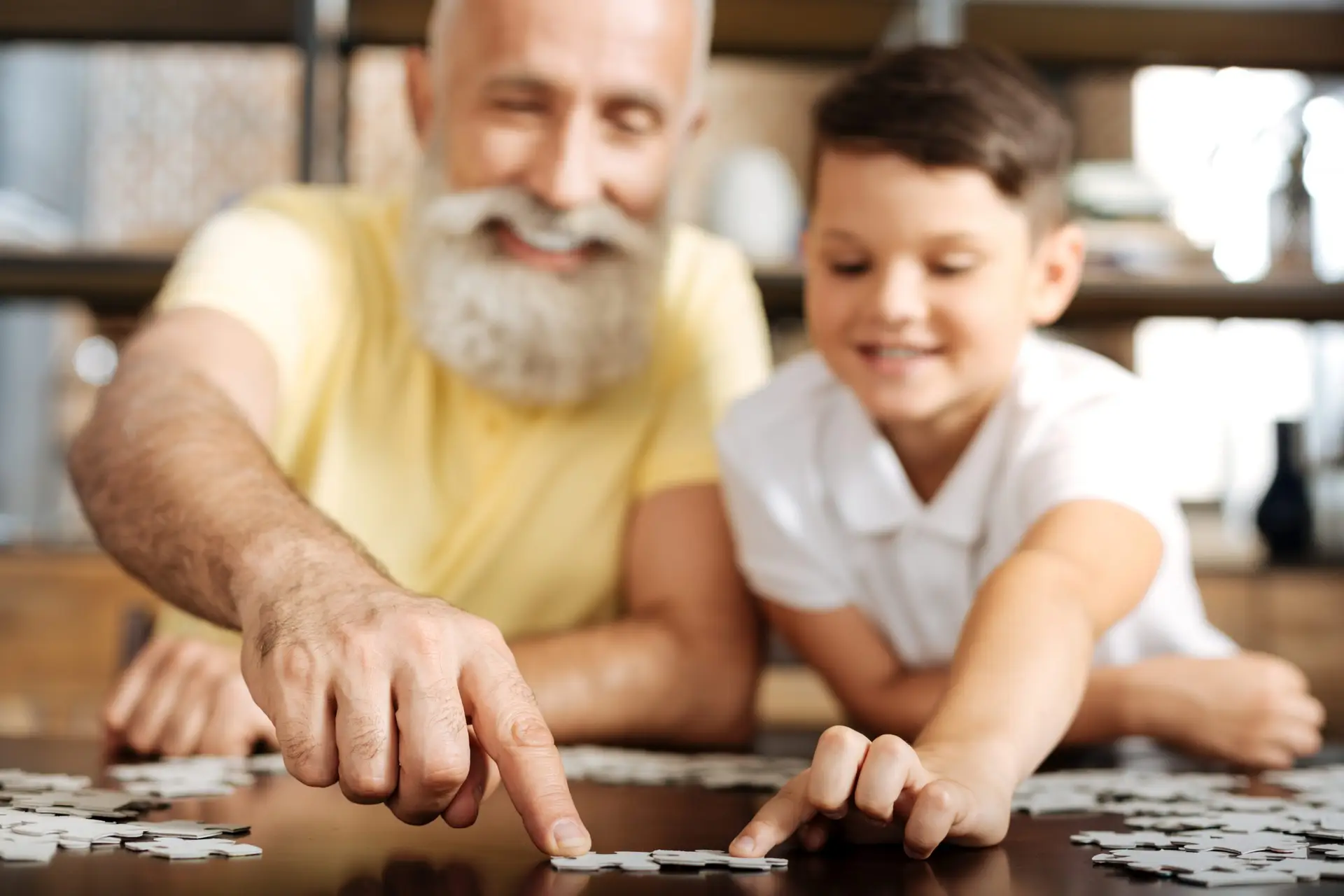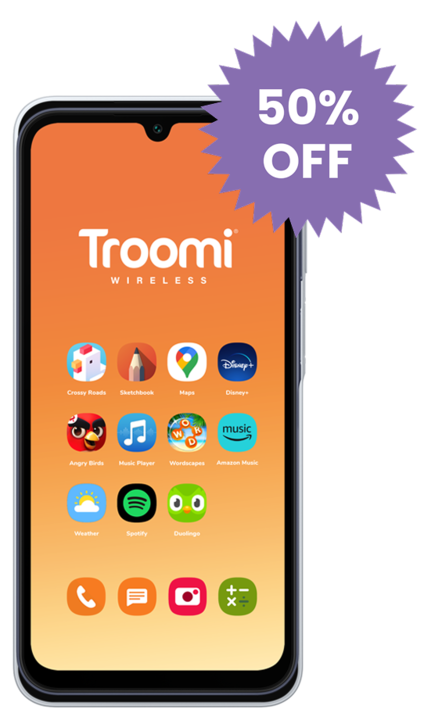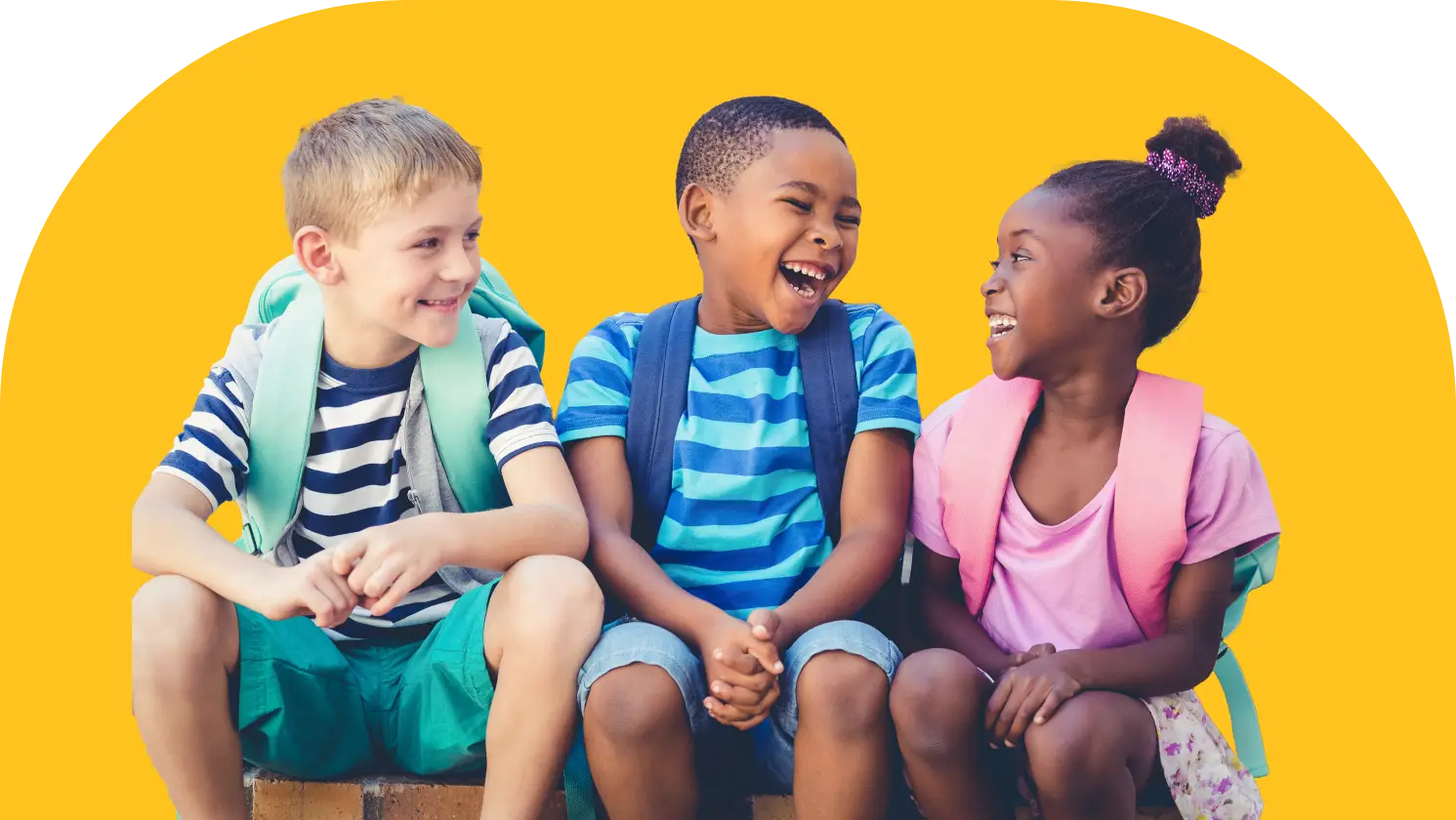Have you ever taken a technology break? When was the last time you put together a puzzle? As I asked myself the same question, I recounted the 500-piece Peter Pan puzzle—painted by the talented Thomas Kinkade—I recently completed with my husband. Then, I realized that “recently” was actually over a year ago!
I have cabinets packed with my collection of puzzles, from chunky children’s puzzles with pegs to intricately illustrated puzzles with thousands of pieces. Finishing puzzles is a favorite pastime of mine, and it has been since before I could walk, talk, or slip on my shoes (or so I’m told)! Something I once spent hours at a time doing is something I’m simply too busy to do anymore—at least, that’s what I tell myself.
But, the beauty of puzzles is that they don’t need to be assembled all at once! Leave it half-finished on a foldable card table and complete it when you can. And if you can believe it, that’s not even among the best benefits of puzzles! After you’ve read to the end of this article, you might just find that regular puzzle-building is the missing piece you’ve been looking for.
The Benefits of Puzzles for All Ages
If you think you’re too cool, too old or too impatient for puzzles, I have news for you: you’re not! Puzzles don’t discriminate. They’re for everyone! No matter your preferences, there’s a puzzle out there for you. (And they come with some sweet benefits!)
Stress Reduction
After a long, exhausting and stressful day, the couch in front of the TV is probably calling your name. Instead of slumping in front of the screen, try putting together a puzzle to help you rest, unwind, reset, and recharge.
Taking a break to build a puzzle gives your brain the space it needs to rest and reset, which can improve your productivity and focus for what you need to tackle next. Plus, it lowers your blood pressure, slows your heart rate, and improves your mood—all relieving your stress!
Sense of Accomplishment
Every time you put a puzzle piece in the right place, a dash of dopamine is released in your brain. The more dopamine is produced, the better we feel! Puzzles encourage us to challenge ourselves. With every puzzle we complete, we accomplish a goal and our self-confidence skyrockets!
Memory Improvement
Picking up a puzzle piece and searching for where it needs to go “exercises” the part of the brain that stores information. As we figure out how each piece contributes to a larger image, our brain’s neural connections are strengthened—and new connections are formed! This repeated process increases mental speed and improves short-term memory. Who knew fighting forgetfulness could be so fun?
Mental Exercise
It may sound funny at first, but exercise isn’t just for your physical body! Just as we need to exercise our bodies to stay happy and healthy, we need to do the same for our brains.
When we work both the right—where creativity, emotions, and intuition are processed—and the left—where logical, objective, and methodical thinking happens—sides of our brains, the practice is called a complete brain exercise. During complete brain exercises, cognitive function is enhanced! As puzzle play continues over time, the rate of cognitive decline can slow. A puzzle a day keeps the doctor away!
Quality Time
Puzzles provide a fun, family-friendly activity everyone can enjoy! Pick a puzzle, gather ‘round the table and help each other put it together piece by piece.
Whether you’re with family, friends, or neighbors, puzzles can bring people together through collaboration, communication, and connection. It’s easy to kick back, relax and chat with loved ones when there’s a puzzle nearby!
Screen-Free Fun
A fun activity away from your phone, the TV, or another tech toy comes with benefits all on its own. Practicing mindfulness and being present in the moment without distraction is essential to stay sane—and puzzles can help make that happen! Give your eyes a break from the blue light and get jiggy with a jigsaw puzzle. (Your imagination and creativity will thank you for it!)
How Puzzles Help Child Development
Puzzles aren’t just a fun toy for kids to enjoy—puzzles play a fundamental role in the development of children’s spatial awareness, fine motor skills, and so much more!
Awareness of Space, Shapes and Sequence
Spatial awareness is the understanding of the relationship between objects, the space they take up, how they move in relation to one another, and what happens when that relationship changes. When children practice putting together a puzzle, they begin to recognize that spatial relationship.
During puzzle play, children learn which pieces fit together by observing and analyzing any colors, shapes, and pictures that distinguish each piece from another. Though they determine where pieces go through trial and error, this process is later refined and determined in their mind as they grow!
When coaching children as they play with puzzles, using directional words like “turn,” “flip,” and “rotate,” and sequential words like “first,” “second,” and “next” can cement these concepts in their minds—and their vocabularies—early on. It’s never too early, right?
Fine Motor Skills and Hand-Eye Coordination
Children’s puzzles with large pieces, unique shapes, and knobs or pegs aren’t simply for ease of use or choking prevention (though that’s an important part of it, too). This type of puzzle teaches tiny humans how to move the muscles in their fingers, hands, arms, and wrists—and how those movements connect to their line of sight!
Particularly for babies and toddlers, puzzle play provides an opportunity to pick up, grasp, and push (or force, at times) each piece into the right place. While manipulating puzzle pieces to put them together, children develop smoother, more precise movements and the crucial thumb-and-first-finger “pincer grip” they’ll later use to hold a pencil. Practice makes perfect!
Problem-Solving Skills
When met with an unfinished puzzle, children are faced with a problem. The solution? Putting the puzzle together.
As they work to complete the task, they learn to set certain pieces aside in order to find the pieces they need to fill the open spaces. This trains their brains to search for alternative solutions and think outside of the box! Plus, it develops their ability to pay attention to detail. Catching the distinctive differences between pieces is what will lead to their success—both in puzzle-building and the future!
Social Development
Learning to play with other children is vital to the development of a child’s social skills. When working on a puzzle with other children, an environment of cooperation and communication is encouraged—and sharing is essential! As group puzzle play grows, so will a child’s attention span, patience, and self-control.
The Best Puzzles for Toddlers, Teens, and Kids in Between
Where can you find the best puzzles for kids? There are endless options, and what’s best for your child will depend on their age and ability. Here are some tips to picking the perfect puzzle!
Best Puzzles for Babies
Plain and simple—that’s what babies want! Once they’ve hit their six-month mark, they’re in the clear to get their cute and chubby hands on puzzle pieces. Between six months and two years, here’s what they’ll need in a puzzle:
- Inset puzzle with 3-8 pieces
- Large, chunky pieces with knobs or pegs
- Simple, high-contrast images
- Bright colors
Click here to see a simple option for your little one!
Best Puzzles for Toddlers
Once your child reaches their terrific twos and threes, they won’t be able to wait for what’s next! Look for these components in their puzzles:
- Inset or framed jigsaw puzzle with 5-24 pieces
- Medium to large pieces with or without knobs or pegs
- High-contrast images
Click here to see a set of puzzles they’ll go crazy for!
Best Puzzles for Preschoolers
When your child is packed up and prepared for preschool, they’ll believe they’re ready for all the “big kid” things. (And they will be!) Challenge them with puzzles that include these components:
- Framed or floor jigsaw puzzles with 30-48 pieces
- Medium-sized pieces
- Medium-contrast or high-contrast images
Click here for a fun bundle of puzzles your preschooler will love!
Best Puzzles for Kids Under 10
When it comes to puzzles, your kid’s on their way to the big leagues by the time they’ve hit kindergarten. Keep these elements in mind for your elementary-aged puzzle masters:
- Framed, floor, or three-dimensional jigsaw puzzles with 60-200 pieces
- Medium to small pieces
- Low-contrast images
- Special features or effects, like glow-in-the-dark images or irregular-shaped pieces
Click here for a cool (and colorful) choice!
Best Puzzles for Tweens and Teens
By the time your child’s a tween or teen, they’ll easily be a puzzle expert! Focus on these features for your cool kids:
- Framed, floor, or three-dimensional jigsaw puzzles with over 200 pieces
- Small pieces
- Low-contrast images
- Special features or effects, like glow-in-the-dark images or irregular-shaped pieces
- Puzzles highlighting a specific topic, theme, or fandom
Click here for a sweet selection!
Puzzle Tips and Tricks
Now that you’ve picked the perfect puzzle, here are some tips and tricks to putting it together:
- Get your game plan planned. When the puzzle is complete, what’s next? Are you going to take it apart and put it back in the box, or will you glue it together and hang it on display? Figure out your end-goal first, then ensure you have the supplies you need.
- Click here for fantastic jigsaw puzzle glue!
- Find your workspace. Will the kitchen table do? What about a portable, foldable card table? How about the floor? Wherever you work, make sure you have the space to fit the puzzle you’ve picked.
- Good lighting. Can you see what you’re doing? Are there shadows left and right? Having good lighting is essential to finishing a puzzle without frustration.
- Flip up every piece. Before you begin, flip every puzzle piece so the image is facing upwards. It’s a bit of a pain at first, but it’ll help you in the long run!
- Sort your pieces. Half the fun of a puzzle is the preparation! Sort each piece by edge, color, and distinguishing mark (like faces, doors and windows, text, or skylines). Staying organized is the key to success!
- Plan your placement. Build the border first, then fill it in with the center pieces.
- Don’t give up! You may want to throw in the towel here and there, but keep at it. Seeing the puzzle through to the end will be worth it!


